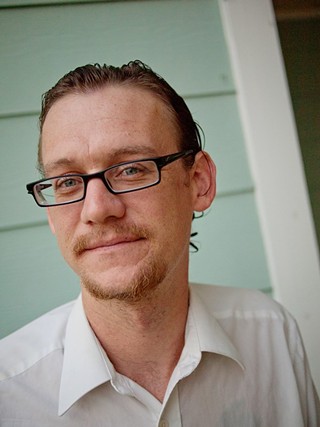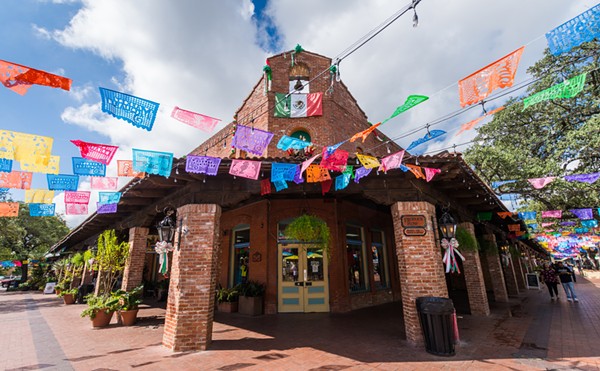In this week's issue of the San Antonio Current, we explored criticism of the Vista Ridge Pipeline levied by the Mi Agua Vida Coalition.
The $3.4 billion pipeline would pump in water from Burleson and Lee counties, which are 142 miles away, providing San Antonio with a 30-year water supply that would help meet the demand of an estimated more than 1 million people expected to arrive in Bexar County by 2040.
Due to scheduling conflicts, SAWS was unable to connect with us by deadline. However, on Tuesday, SAWS vice president of government relations and corporate strategy shared the water utility's perspective on the Mi Agua Vida Coalition's criticisms.
The three main components of Mi Agua Vida Coalitions opposition include a claim that between Vista Ridge and two other pumping projects targeting the same aquifer will result in excessive drawdown from the Carrizo-Wilcox Aquifer; that the pipeline will promote rampant, energy intensive suburban sprawl; and that rate increases that will partially fund the project will negatively impact low-income families and senior citizens.
What follows is a breakdown of Mi Agua Vida complaints about the project followed by a response from Burton.
What is SAWS' response to Mi Agua Vida's assertion that the project will result in excessive drawdown from the Carrizo-Wilcox Aquifer?
"A lot of that information is based off a model, a Groundwater Availability Model (GAM), a state ground water model, and it over anticipates different drawdown levels. So it's actually being re-calibrated. It's being fixed because of issues with it and it doesn't accurately predict the drawdowns ... the science is flawed.
The finer point is the project is really being developed in a portion of the aquifer that minimizes impacts to overlaying areas. So it's very deep and has a very down dip and so it has a negligible impact. The model (GAM) doesn't show different layers."
Additionally, Burton says that local groundwater districts that monitor the Carrizo-Wilcox Aquifer disagree that the Vista Ridge project will result in excessive drawdowns.
What does SAWS think about the claim that the pipeline will result in energy intensive suburban sprawl?
"I mean, that's the balance that any community plays. You have a growing population and you need to be able to provide basic infrastructure. The City of San Antonio deals with how growth occurs, how zoning occurs, which portions they will be able to develop. The city will coordinate and regulate a lot of that.
At SAWS, we grow based off of the city so as the city develops boundaries, we plan to grow with the city and make sure that as the city grows, it has enough water, infrastructure, wastewater infrastructure — all the different components need to be taken care of.
No one can ignore the fact that we are growing. Growth is not necessarily bad, but bad growth is bad. It has to be sustainable and managed growth that's developed in ways that are in concert with the community. And we think this project certainly meets that."
What is SAWS' response to Mi Agua Vida's claim that the upcoming rate increase, which partially funds the project, will negatively impact low-income families and seniors?
Burton says SAWS has developed a "lifeline" rate, which will help people save money. Basically, SAWS has four tiers for rates, but are changing it to eight tiers that will thin the price out.
The "lifeline" rate is 2,992 gallons — or the basic amount of water needed for two people in an average household.
Burton says the proposed rates, along with the new rate structure, will result in people who have that "lifeline" rate seeing a decrease in their water bill.
"And after the rate restructure and increases are approved, we will still have the lowest rates of any major city in Texas," Burton said.
Is there anything else you want to mention?
"All of the issues go back to the point, which is we developed this project to have protections in place for San Antonio. It is a much needed project. All of those concerns, should any happen, the risk is shifted to the private (Vista Ridge) Consortium. San Antonio only pays for water delivered.
Should the GMAs, groundwater districts, state, or whoever gets involved and sees issues or reduces pumping, SA ratepayers still don't have to pay. We developed a whole lot of protections to shift risk on the private consortium. That's the crux."
SAWS spokeswoman Anne Hayden, who was on the conference call with Burton, said the Vista Ridge project went through a two-year process where SAWS considered a lot of alternative projects. Eventually, the water utility selected the project but backed out when problems about risk were raised. But negotiations resulted in that risk being shifted to Abengoa, not SAWS.
Burton expanded on Hayden's point.
"The projects were considered and it was recommended they reject all of those projects. So all of these concerns raised by people, we actually saw those two years ago and said to the private consortium 'If you're not willing to take risk, we're not at the table.' So they did take the risks and we moved forward."

KEEP SA CURRENT!
Since 1986, the SA Current has served as the free, independent voice of San Antonio, and we want to keep it that way.
Becoming an SA Current Supporter for as little as $5 a month allows us to continue offering readers access to our coverage of local news, food, nightlife, events, and culture with no paywalls.
Scroll to read more San Antonio News articles
About The Author
Newsletters
Join SA Current Newsletters
Subscribe now to get the latest news delivered right to your inbox.


















